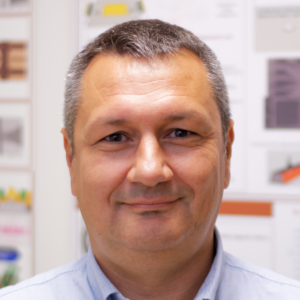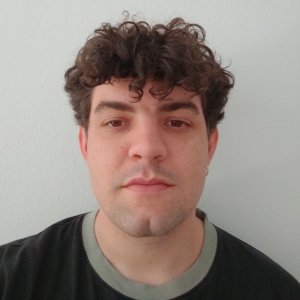Overview
The Magnetic Random Access Memories (MRAM) group develops advanced concepts in this emerging technology. The goal is to realize cells with improved thermal stability, lower power consumption and/or faster switching. Our research covers material stack deposition, nano-fabrication and electrical test evaluation, for applications as standalone memory and non-volatile logic and more recently in neuromorphic computing architectures.
Research directions
Perpendicular Anisotropy Materials
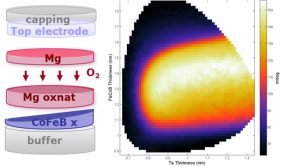
High energy barriers for spin transfer torque (STT) MRAM cells can be achieved with perpendicular anisotropy magnetic tunnel junctions. Solutions for high density MRAM cells to diameters below 20nm require continuous improvements in perpendicular surface anisotropy, while maintaining high TMR properties.
Perpendicular STT MRAM
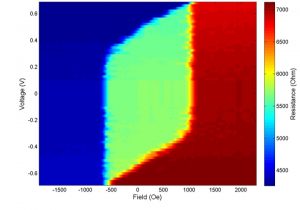
Evaluation of MRAM concepts requires simulation of expected reversal mechanisms and electrical characterization of individual cells. We aim at understanding dynamics of magnetization reversal and the expected impact of stack modifications to explore application specific optimizations.
Nanofabrication Challenges
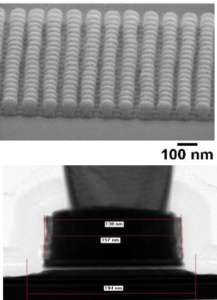
Innovation on dense MRAM using pre-patterned substrates, CMOS integration of multifunctional cells and sub-10nm lateral sizes. Tunnel junction nanofabrication in our platform is essential to evaluate MRAM concepts and performance.
Perpendicular Shape Anisotropy
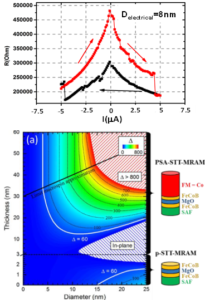
A solution for sub-10nm cell sizes uses high aspect ratios to generate perpendicular shape anisotropy providing scalable retention at the smallest cell sizes. Spin transfer torque switching is possible in these cells, where the reversal dynamics is now under study.
The team
Former members
Post-docs
- Andrey TIMOPHEEV (2014-2017)
- Van Dai NGUYEN (2016-2018)
- J. Ranier Roiz (2015-2016)
- Nikita Strelkov (2016-2019)
PhD
- Luc TILLIE (2015-2018)
- Nicolas PERRISSIN (2015-2018)
- Jyotirmoy CHATTERGEE (2014-2017)
- Hieu Tan NGUYEN (2013-2016)
- Antoine Chavent (2013-2015)
Process Engineers
- Jude GUELFFUCCI (2015-2017)
- Nathalie LAMARD (2016-2017)
- Guillaume LAVAITTE (2015-2016)
Projects
- Samsung SGMI (2014-2017)
- ANR Excalyb (2014-2017)
- Heumem (2015-2018)
- EU-FET Spice (2016-2019)
- EU Great (2016-2019)
- ERC Magical (2015-2020)
Partners
- CEA LETI, Grenoble, France
- Institut NEEL, Grenoble, France
- Crocus Technology, Grenoble, France
- Samsung, San Jose, USA
- Singulus AG, Kahl am Main, Germany
- Aarhus University, Aarhus, Denmark
- Radboud Universiteit, Neijmegen, Netherlands
Recent news
- PhD Defense – All-optical switching of spintronic devices (January 12th, 2024)

On Wednesday January 31th, at 10:00, David Salomoni (SPINTEC) will defend (in english) his PhD thesis entitled : All-optical switching of spintronic devices Place : IRIG/SPINTEC, CEA Building 10.05, auditorium 445 (access needs authorization request it before ... - PhD Defense – Magnetic Memories Optimized for Cryoelectronic Operation (November 16th, 2023)

On Monday December 04th, at 14:00, Pedro Brandao Veiga (SPINTEC) will defend his PhD thesis entitled : Magnetic Memories Optimized for Cryoelectronic Operation Place : IRIG/SPINTEC, Amphithéâtre Daniel Dautreppe, Bâtiment B, CEA – 17 rue des Martyrs ... - In plane reorientation induced single laser pulse magnetization reversal (October 27th, 2023)

We demonstrate that single pulse all optical helicity independent switching can be generalized for a large range of rare earth–transition metal multilayers. The threshold fluence for switching is observed to be independent of the pulse ... - Spiking neuron based on magnetic tunnel junction with dual free layer (October 27th, 2023)

We demonstrate that a perpendicular magnetic tunnel junction (MTJ) is capable of emulating an artificial spiked neuron. The magnetic stack has been designed so that the MTJ has two free layers, whose magnetization can be ... - Three years engineer researcher position (October 27th, 2023)

Spintec laboratory is opening a up-to three years engineer researcher position in the framework of the PEPR electronics (part of France 2030 strategy) – project EMCOM (emerging memories for computing). Context: The cost of transferring information ...







